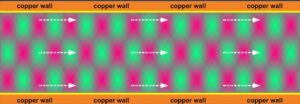7.9 waveguide, microstrip lines

Waveguides and Microstrip Lines in High-Frequency Systems
Navigating the High-Frequency Spectrum with Waveguides and Microstrip Lines In the intricate world of high-frequency radio communications, understanding the mechanics and applications of waveguides and microstrip lines is crucial. This chapter, titled “Waveguides, Microstrip Lines,” delves deep into these vital components of modern radio frequency (RF) and microwave systems. Designed for amateur radio operators and technicians, this chapter provides a comprehensive exploration of these technologies, elucidating their roles, advantages, and the principles governing their operation.
Waveguides: The Pathway for Microwave Frequencies The chapter begins by discussing waveguides, which are essential for efficiently transporting electromagnetic energy at microwave frequencies. It covers the fundamental aspects of waveguides, such as their operational frequency range, efficiency attributes, and structural requirements. Understanding the properties that contribute to a waveguide’s efficiency, such as low radiation, dielectric, and copper losses, is essential for applications where signal integrity at high frequencies is paramount.
Microstrip Lines: Compact and Integrated Transmission Next, the focus shifts to microstrip lines, a type of printed circuit transmission line used extensively in RF and microwave circuits. These lines are integral to modern electronics, offering a compact and integrated solution for high-frequency signal transmission. The chapter discusses the characteristics of microstrip lines, their advantages, and the challenges they pose, such as reduced shielding compared to coaxial cables.
